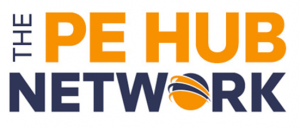Covid-19 and cashflow forecasting: buyer beware | PE Hub
Thomas Friedman recently argued that “the coronavirus will create a new historical divide: before-Corona (BC) and after-Corona (AC).”
By Rishi Jain, Head of Performance Improvement & Restructuring Solutions, Co-Head of Western Region and Jubin Pandey, Vice President

Private equity sponsors don’t think a cash flow analysis will cure what ails their portfolio companies. They do, however, believe it’s the best first step toward creating a treatment plan that will help right the trajectory of once healthy investments now at-risk.
And they’re correct. But, it’s not the same 13-week analysis they’re used to.
The typical version is primarily for companies not meeting expectations based on projected performance. It uses static inputs from Treasury to create a liquidity outlook over a finite, few-weeks period of time. It’s premised on specific assumptive data used for singular scenario planning.
Thomas Friedman recently argued that “the coronavirus will create a new historical divide: before-Corona (BC) and after-Corona (AC).”
In the AC period, there are no reliable projections; market realities are volatile and uncertain. Cash flow analysis should be oriented less toward restructuring and more toward reassessing (and sometimes resuscitating).
Portfolio companies responding to COVID-related disruptions therefore need:
Doing cash flow analytics well does not require more time or sponsor investment.
It does require a different perspective. It requires an operational finance lens. It requires experience building an integrated approach inclusive of multiple stakeholders. It requires expertise working with granular and often large data inputs. It requires a sophisticated approach to developing and identifying the right level of KPIs. It requires an understanding of both performance improvement scenarios as well as insights drawn from working with healthy companies – where longer-term scenarios abound, and where collaboration with FP&A is key. It requires a business process mindset for weekly actualization and accountability.
Choosing the right kind of cash flow analysis (integrated, dynamic modeling) can inform the success and efficacy of downside scenario planning. Of course, conducting any kind of cash flow analysis is only the first step in a company’s liquidity journey. The next, critical step must be to act on its insights. That could mean pulling the right value creation levers to ensure companies in the green remain there. It could mean value stabilization initiatives for at-risk (yellow) companies. Or, as is increasingly the case in the AC environment, triaging those companies that are blinking red. But that’s for another article…
Thomas Friedman recently argued that “the coronavirus will create a new historical divide: before-Corona (BC) and after-Corona (AC).”